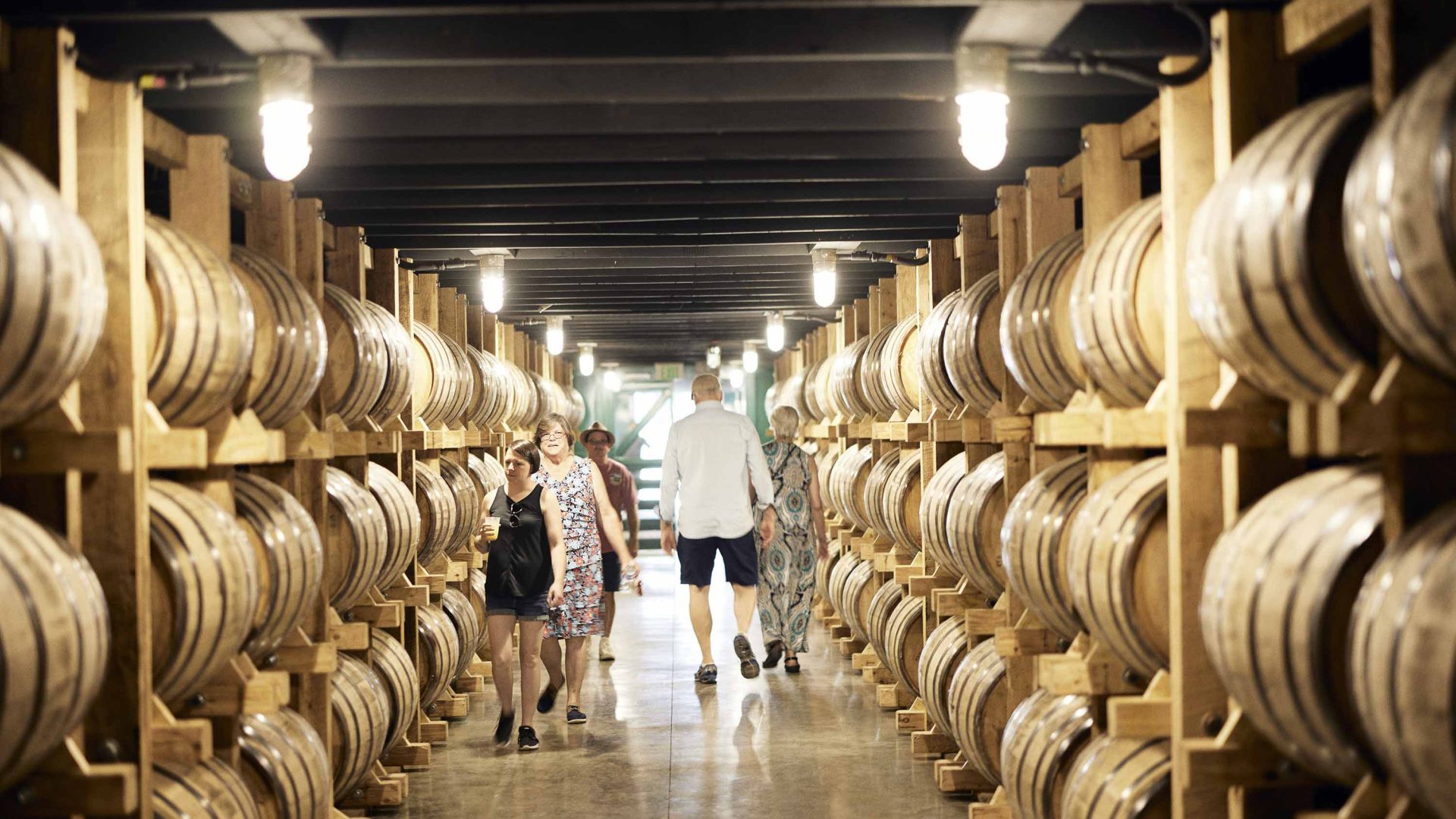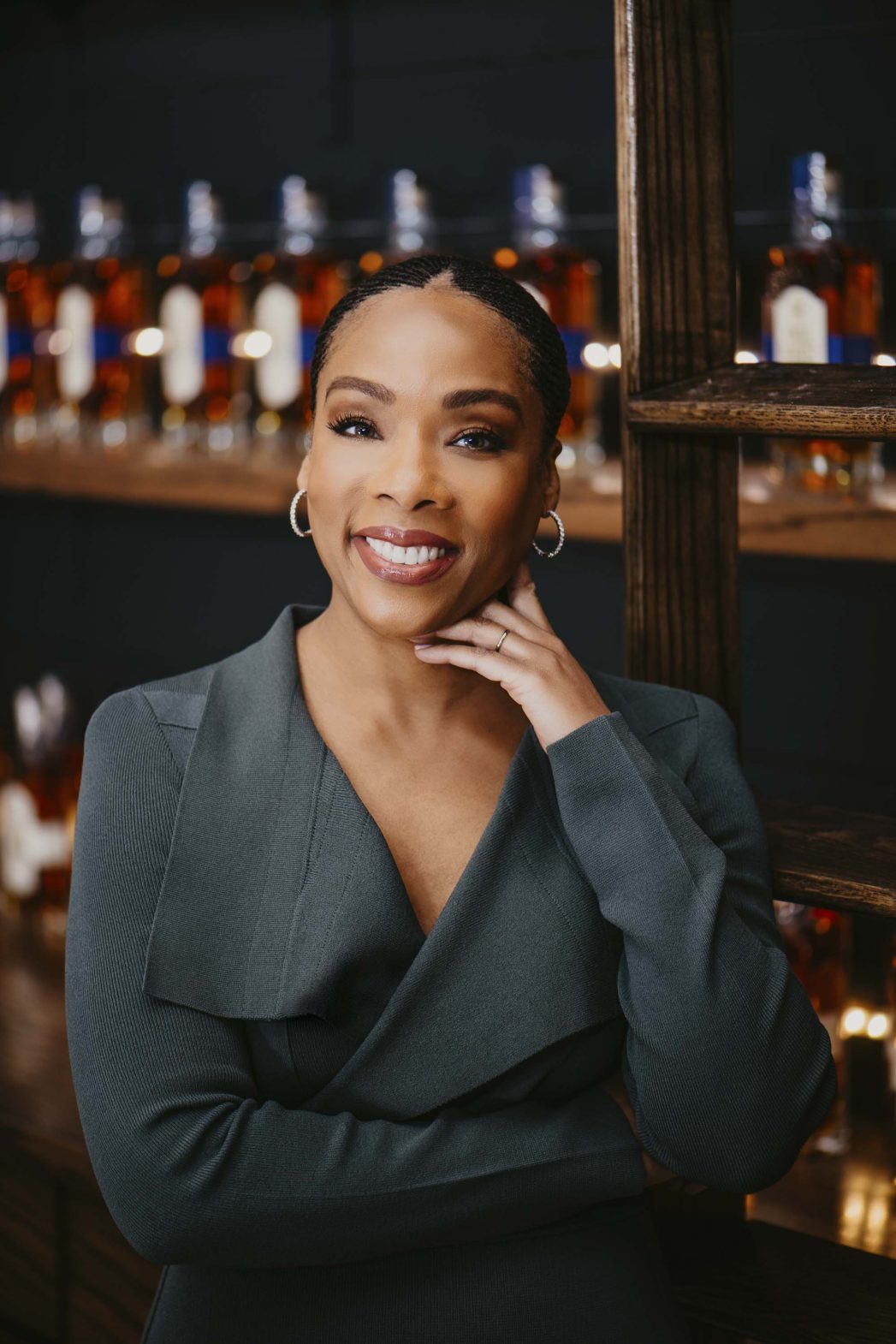
Nestled deep in the hills of Tennessee, writer James March uncovers the true story of Tennessee whiskey, and the man who perfected the craft of distilling it.


Nestled deep in the hills of Tennessee, writer James March uncovers the true story of Tennessee whiskey, and the man who perfected the craft of distilling it.
During a tour of Tennessee’s Nearest Green Distillery, I’m shuffled into a small, dimly lit room and invited to take a seat on a soft leather stool at the bar. The lights go out and a film flickers on. On the projector screen, the sound of birdsong and gentle breeze accompanies the actor Jeffrey Wright as he looks toward a white house perched on a distant rolling green hill. Eventually, he steps inside through a creaking front door. After a short pause for a reverential look around, Wright turns to the camera.
“This is a special home,” he says in a deep, gravelly tone. “On a special piece of American land. I’m surprised it’s still here.”
Wright walks towards a window and peers out towards a nearby hillside.
“We’re in Tennessee, in the hills above Lynchburg,” he says. “I’m going to tell you a story… a true story.”
I’ve been on distillery tours before, but not one like this. And while the beautifully cinematic 10-minute film is a nice dramatic addition (and one that does a fine job of setting the scene), the story of Nearest Green himself holds enough intrigue that it doesn’t need any Hollywood stardust. Yet amazingly, this is also a story that went untold for over 160 years.

From the dive bars of Manhattan to stylish Parisian bistros, there’s a good chance of finding a bottle of Jack Daniel’s whiskey sitting behind the bar. Its distinctive square bottle wrapped in the famous black label is present in almost every bar in every corner of the globe, making the company one of the world’s biggest whiskey brands. In 2021, over 13 million cases of Jack Daniel’s whiskey were sold worldwide.
Yet most consumers probably don’t know that the man who taught Daniel how to make whiskey was a former slave. Everything Daniel knew about distilling was taught to him by an African-American forced into slavery during a period of atrocious discrimination in a state below the Mason-Dixon Line.
Born around 1820 in Maryland, Nathan ‘Nearest’ Green was an enslaved man distilling whiskey on a farm just outside of Lynchburg owned by a local preacher by the name of Dan Call. (Side hustles making liquor weren’t uncommon in those days, even for a man of God.)
While enslaved men were commonly involved in the dirty and dangerous work of making spirits during this time period, it was clear that Green had a talent and his whiskey was reputed as some of the finest in the region. His practice of filtering the whiskey through sugar maple charcoal before aging is still used today and is known as the Lincoln County Process, the distinct difference that separates Tennessee whiskey from bourbon whiskey.
Using charcoal to purify food and liquids is a commonly used method in West Africa. It’s likely that the process was brought to America by enslaved Africans and passed along by word-of-mouth for generations. This process gave Green’s whiskey a pleasant smoothness.
At some point during the middle of the 19th century, a young boy named Jasper—who liked to go by “Jack”— joined the farm as a hand, looking to help Call with errands. He was interested in the smoke and steam bellowing up from the nearby hills where Green was hard at work. Eventually, Green took the young Jasper “Jack” Newton Daniel under his wing.
Years later—at the end of the Civil War in 1865—Nearest Green became a free man. With his freedom, he chose to continue at Call’s farm. The following year his young mentee, Jack, bought the distillery from Call. The Jack Daniel Distillery was established and he made Green his Master Distiller—the first Black master distiller in the United States.
Not just the first female. Not just the first Black woman. Nearest Green’s great-great-granddaughter is the first human being to win Master Blender of the Year back to back.
Green retired (or possibly died) around 1881, around the same time Daniel moved his distillery to its current location in Cave Spring Hollow. Several of Green’s children and grandchildren moved to the new spot and went to work for Jack. Despite Daniel’s affection for Nearest Green and the unusual situation of a Black family having wealth and status in the local area, Green’s inspiring story was somehow lost to the dustbins of history.

“When Fawn heard this story about an enslaved man teaching Jack Daniel how to make whiskey, she flew to Nashville, then to Lynchburg,” explains my tour guide, Jason Morgan, as we stand inside the walking horse barn entrance at Nearest Green Distillery. “She took a few tours, went to the library, to Dan Call’s farm and ended up buying the farm within four days of hearing the story.”
Morgan is talking about Fawn Weaver, the author and entrepreneur who became infatuated with Green’s story upon hearing about it in 2016. So much so that after talking to relatives of both the Green and Daniel families, she set up the Uncle Nearest Premium Whiskey brand in 2017. This business endeavor makes Weaver the first Black woman to head a major spirits brand and creates the first American spirit brand with an all-female executive team.
Today, Nearest Green Distillery sits on a 323-acre plot of land around 50 miles south of Nashville. As we’re bathed in sun on a chilly November afternoon under big Tennessee skies, I walk with Morgan to a gleaming tasting room where the walls are decked with portraits. Weaver joins us briefly for a quick hello, though her busy day means she can’t stay for long.
But before leaving, she directs our attention to a portrait on the wall of Victoria Eady Butler, Uncle Nearest’s Master Blender and Nathan Green’s great-great-granddaughter. Not only is Butler a remarkable link to a legendary past, but she’s also exceptional at her job. In 2022, Butler made history as the first person to win back-to-back Master Blender of the Year titles at Whisky Magazine’s American Icons of Whisky Awards.
“Not just the first female, not just the first African-American,” says Morgan. “She’s the first human being to win it back to back.”
He explains all this while pouring a small dram of a 100-proof whiskey for me to sample called 1856, believed to be the year Green perfected his blend. Over 150 years later, Nathan Green’s name is finally being honored in the way he taught his family how.
_____
Writer James March was a guest of TNvacation.com for his travels to Tennessee.








Can't find what you're looking for? Try using these tags: